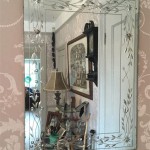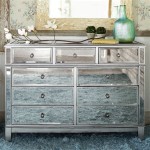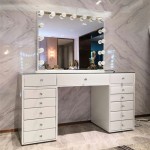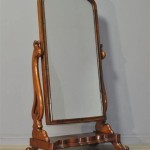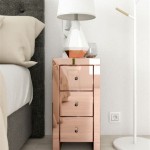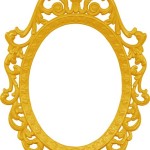Safety Mirrors for Nurseries: Enhancing Development and Ensuring a Secure Environment
Nurseries are crucial spaces for early childhood development, impacting a child's cognitive, social, and emotional growth. Creating a stimulating and safe environment within these spaces is paramount. One often-overlooked element that contributes significantly to both these aspects is the strategic use of safety mirrors. These mirrors are not merely decorative; they serve multifaceted purposes, from fostering self-awareness to enhancing spatial perception and promoting visual tracking skills, all while adhering to stringent safety standards to ensure a child's well-being.
Traditional glass mirrors pose significant risks in a nursery setting. The potential for shattering and creating sharp, dangerous fragments makes them unsuitable for areas frequented by young children. Safety mirrors, on the other hand, are constructed from materials designed to minimize these risks. Typically made from acrylic or polycarbonate, these mirrors are significantly more resistant to impact and shattering. Even in the event of damage, they tend to break into larger, less hazardous pieces, or, in some cases, simply crack without producing sharp splinters.
The choice of materials is not the only factor contributing to the safety of these mirrors. The manufacturing process focuses on creating smooth edges and rounded corners to eliminate sharp points that could cause injury. Furthermore, many safety mirrors are designed with a flexible backing that allows them to bend upon impact, further reducing the risk of breakage and injury. The installation methods also prioritize safety, often involving secure mounting systems that prevent the mirror from becoming dislodged or falling.
Promoting Self-Awareness and Cognitive Development
Mirrors play a significant role in a child's development of self-awareness. From a young age, children are intrigued by reflections. Initially, infants may not recognize themselves in a mirror, but as they grow, they begin to understand that the image they see is their own. This realization marks a crucial step in developing a sense of self and understanding their own physical presence.
The use of safety mirrors in nurseries encourages this self-discovery process. By providing children with opportunities to observe themselves, mirrors facilitate the development of body awareness and the understanding of their own movements. Observing their own expressions and gestures helps children connect their internal feelings with external representations, contributing to their emotional intelligence.
Beyond self-awareness, mirrors can also stimulate cognitive development. Children may engage in imaginative play in front of mirrors, creating stories and scenarios that involve their reflections. This type of play fosters creativity, problem-solving skills, and language development. Furthermore, observing themselves performing tasks in a mirror can enhance their understanding of cause and effect and improve their motor skills.
The placement of mirrors can be strategically chosen to maximize their developmental benefits. Mirrors placed at a child's eye level encourage interaction and self-observation. Mirrors positioned near activity centers can provide a different perspective on activities, allowing children to see their actions from a new angle and fostering spatial reasoning. The inclusion of mirrors in sensory areas can enhance the exploration of textures and colors, adding another dimension to the sensory experience.
Enhancing Spatial Perception and Visual Tracking Skills
Spatial perception, the ability to understand the relationship between objects in space, is a fundamental skill that develops rapidly in early childhood. It is essential for navigating the environment, understanding directions, and performing tasks that require hand-eye coordination. Mirrors can contribute to the development of spatial perception by providing children with a reflected view of their surroundings, effectively doubling the visual information available to them.
When children observe themselves and their environment in a mirror, they are presented with a unique perspective that enhances their understanding of spatial relationships. They can see objects from different angles and distances, improving their ability to judge depth and distance accurately. This is particularly beneficial for children who are learning to crawl, walk, or navigate through obstacles.
Visual tracking skills, the ability to follow a moving object with the eyes, are also crucial for development. Mirrors can be used to create visual tracking exercises. For example, a teacher can move a colorful object in front of a mirror, encouraging children to track the object's movement with their eyes. The reflected image adds complexity to the exercise, requiring children to coordinate their eye movements with the movements of both the real object and its reflection.
The size and shape of mirrors can also influence their impact on spatial perception and visual tracking. Larger mirrors provide a broader view of the surroundings, enhancing the sense of space and allowing children to see themselves in relation to a larger context. Mirrors with curved or angled surfaces can create distorted reflections, which can be used to stimulate visual curiosity and encourage children to explore different perspectives. However, such mirrors must be carefully chosen and positioned to avoid causing disorientation or visual fatigue.
Ensuring a Safe and Secure Nursery Environment
The primary consideration when selecting and installing mirrors in a nursery setting is safety. As previously mentioned, traditional glass mirrors pose unacceptable risks due to their fragility and the potential for creating sharp shards. Safety mirrors constructed from acrylic or polycarbonate are the preferred option due to their impact resistance and shatter-resistant properties.
Beyond the material, the design and installation of safety mirrors must also prioritize safety. Mirrors should have smooth edges and rounded corners to eliminate sharp points that could cause injury. They should be securely mounted to the wall or other surfaces using appropriate hardware and techniques to prevent them from becoming dislodged or falling. The mounting system should be robust enough to withstand the weight of the mirror and any potential impact from children playing or interacting with it.
The placement of mirrors should also be carefully considered to minimize risks. Mirrors should be positioned away from areas where children are likely to run or play aggressively. They should be installed at a height that allows children to see themselves without having to strain or reach. Regular inspections of the mirrors and their mounting hardware are essential to identify and address any potential safety hazards. Any damaged or loose mirrors should be repaired or replaced immediately.
In addition to physical safety, it is also important to consider the psychological impact of mirrors on children. While mirrors can be beneficial for self-awareness and self-esteem, they can also be a source of anxiety or self-consciousness for some children. It is important to create a supportive and encouraging environment where children feel comfortable exploring their reflections without feeling pressured or judged. Teachers and caregivers should be mindful of individual children's reactions to mirrors and provide appropriate support and guidance.
The creation of a visually appealing and developmentally appropriate environment is key. Safety mirrors can enhance nurseries in ways that promote both. Proper maintenance and thoughtful placement are necessary to ensure their effectiveness and safety.

Safari Animals Child Safe Mirrors 6pk

Car Seat Mirrors Rear View Mirror Glasses Cute Animal Pattern Baby Safety For Back Adjustable Lightweight Perfect Infant
The Importance Of Montessori Wall Mirror And Why You Need One How We
The Importance Of Montessori Wall Mirror And Why You Need One How We

Installing A Mirror In Your Children S Room Good Or Bad Idea

Hexagon Nursery Safety Mirror Set Educational Equipment Supplies

Large Safety Mirror Panels Set Pk4

Child Safe Mirrors Me And My Glass

Reflections Educational Equipment Supplies

Indoor Observation Mirrors
